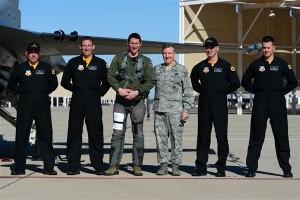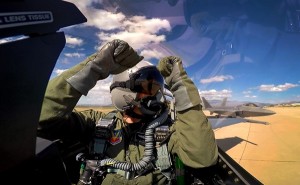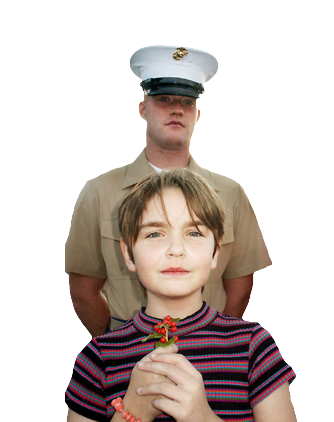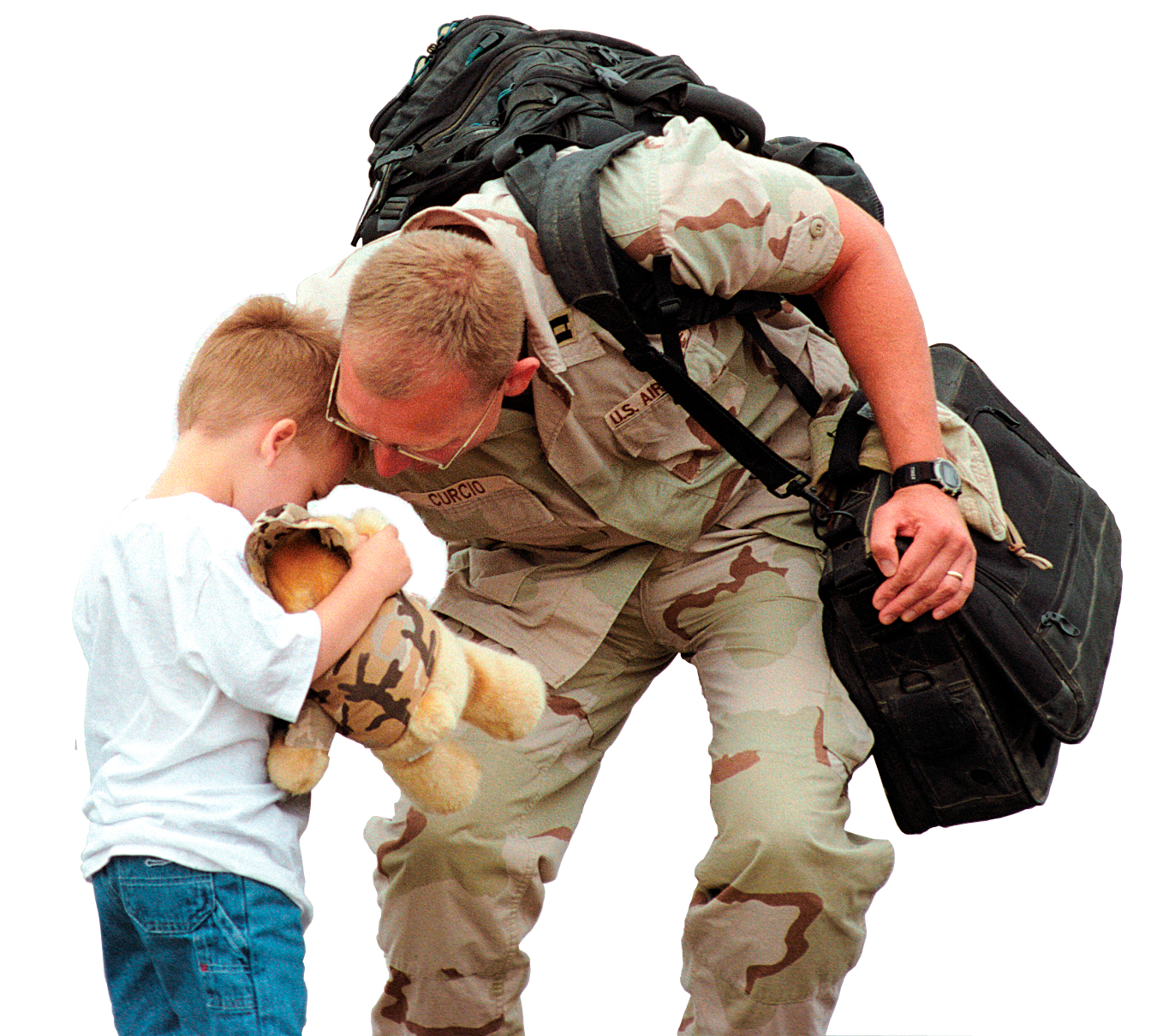After almost three years of inactivity, the Air Force recertified the Viper Demo Team and chose Baker to be its sole pilot. "Craig always wanted to be a fighter pilot," said Lindsey Baker, Baker's wife of 10 years. "That, coupled with his desire to serve our country, drives what he does. He puts his all into everything that he is passionate about." From a young age, the Air Force Academy graduate said, he had an itch for the thrill to fly.  Air Force Capt. Craig “Rocket” Baker, F-16 Viper Demo Team pilot, center left, stands for a photo with team members and Gen. Hawk Carlisle, center right, commander of Air Combat Command, during the Heritage Flight Certification and Training Course at Davis-Monthan Air Force Base, Ariz., Feb. 28, 2015. U.S. Air Force photo by Senior Airman Jensen Stidham"It's what I always wanted to do, and I've been fortunate enough along the way to have family from when I was a kid all the way through my Air Force career, support me along the way to allow what was a dream to become a reality," Baker said. Through the years, the Gray's Creek, North Carolina, native said, he sought the best way to become an Air Force pilot. "I started asking questions, because I really wanted to fly," he said. "Most of the pilot slots were given to the Air Force Academy, so at that point I set my sights on going there."
Air Force Capt. Craig “Rocket” Baker, F-16 Viper Demo Team pilot, center left, stands for a photo with team members and Gen. Hawk Carlisle, center right, commander of Air Combat Command, during the Heritage Flight Certification and Training Course at Davis-Monthan Air Force Base, Ariz., Feb. 28, 2015. U.S. Air Force photo by Senior Airman Jensen Stidham"It's what I always wanted to do, and I've been fortunate enough along the way to have family from when I was a kid all the way through my Air Force career, support me along the way to allow what was a dream to become a reality," Baker said. Through the years, the Gray's Creek, North Carolina, native said, he sought the best way to become an Air Force pilot. "I started asking questions, because I really wanted to fly," he said. "Most of the pilot slots were given to the Air Force Academy, so at that point I set my sights on going there."
 Air Force Capt. Craig “Rocket” Baker, F-16 Viper Demo Team pilot, signals to an F-22 Raptor before takeoff at the Heritage Flight Certification and Training Course at Davis-Monthan Air Force Base, Ariz., Feb. 27, 2015. During the four day course, Baker flew eight sorties practicing his demonstration. Patriotism, Service Enhanced Desire to Fly Going to the academy was fueled a lot by the desire to become a pilot, Baker said, but it quickly came to be about being patriotic and serving the country. The first in his family to join the military, he said, he went through three years of vigorous training to become an Air Force pilot, including pilot training to obtain his wings, land and combat survival training, the Introduction to Fighter Fundamentals course, and the F-16 Basic Course. "It was cool, but nerve-wracking," he said. "Here I was, studying my whole life to be a pilot, and I've never flown before. What if I don't like it?" During training pilots are able to list by preference which aircraft they would like to fly, Baker said. The F-16 was his top choice, he said, because it is a single-seat, single-engine, multirole aircraft that engages in air-to-air and air-to-ground missions. Flying that aircraft is highly esteemed in the Air Force, he added. Baker is assigned to the 79th Fighter Squadron. He has been assigned to Shaw for two years, and he deployed twice before he was selected for the Viper Demo Team. "It's not the typical flying we do day-to-day here at Shaw," he said. "The demo profile is a crusher, for sure."
Air Force Capt. Craig “Rocket” Baker, F-16 Viper Demo Team pilot, signals to an F-22 Raptor before takeoff at the Heritage Flight Certification and Training Course at Davis-Monthan Air Force Base, Ariz., Feb. 27, 2015. During the four day course, Baker flew eight sorties practicing his demonstration. Patriotism, Service Enhanced Desire to Fly Going to the academy was fueled a lot by the desire to become a pilot, Baker said, but it quickly came to be about being patriotic and serving the country. The first in his family to join the military, he said, he went through three years of vigorous training to become an Air Force pilot, including pilot training to obtain his wings, land and combat survival training, the Introduction to Fighter Fundamentals course, and the F-16 Basic Course. "It was cool, but nerve-wracking," he said. "Here I was, studying my whole life to be a pilot, and I've never flown before. What if I don't like it?" During training pilots are able to list by preference which aircraft they would like to fly, Baker said. The F-16 was his top choice, he said, because it is a single-seat, single-engine, multirole aircraft that engages in air-to-air and air-to-ground missions. Flying that aircraft is highly esteemed in the Air Force, he added. Baker is assigned to the 79th Fighter Squadron. He has been assigned to Shaw for two years, and he deployed twice before he was selected for the Viper Demo Team. "It's not the typical flying we do day-to-day here at Shaw," he said. "The demo profile is a crusher, for sure."
Physical Rigors Demonstration pilots’ hearts typically drop about 4 inches while flying aerobatics, Baker said, and because of how he sits in the cockpit, blood pools in his elbows. His neck will hurt, he said, because it is not made to support a head that weighs nine times more than it normally does because of G-forces. To physically prepare for the aerobatics, Baker said, he began participating in triathlons, and he consistently works out four to five times a week. "It's intense," he said. "[Flying aerobatics] is similar to 12 minutes of doing wind sprints with a parachute behind your back. I am pulling eight or nine G's throughout the entire show. It is physically demanding and exhausting."
Representing the Air Force After months of intense training and a 17-ride syllabus, Baker was ready to take to the skies and represent the Air Force in various air shows around the globe. "We are out there to motivate and inspire the future generation of the Air Force," he said. "We are also out there to tell the Air Force story -- what the Air Force is doing currently, what we've done in the past, and what we will do in the future. We provide the community with an opportunity to see what the Air Force does for them." "Being on the team is very prestigious," said Air Force Master Sgt. Aaron Smith, the Viper Demo Team’s noncommissioned officer in charge. "You definitely have to be good at your job and know what you're doing." Even with the long, demanding hours it takes to be the Viper Demo Team pilot, Baker always makes time for his family. "Craig is a very supportive husband and devoted father of our 2-year-old daughter and 2-month-old son," Lindsey Baker said. "His career has literally taken our family around the world, and I am thankful that I've been by his side through it all."
Written July 29, 2015: By Air Force Senior Airman Diana M. Cossaboom 20th Fighter Wing
Republished and redistributed by SOT by permission of DOD






